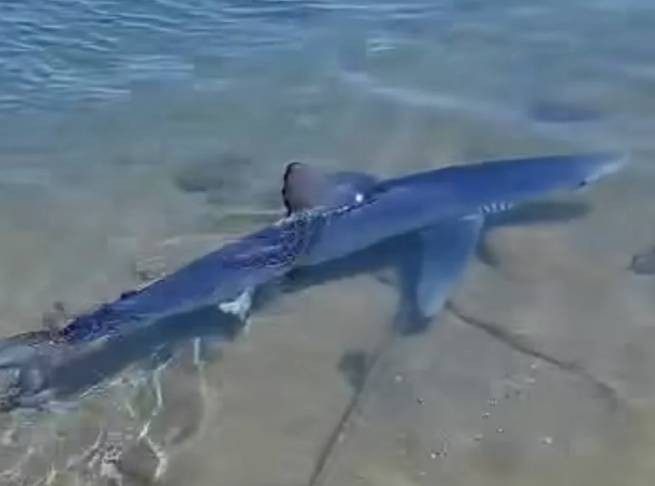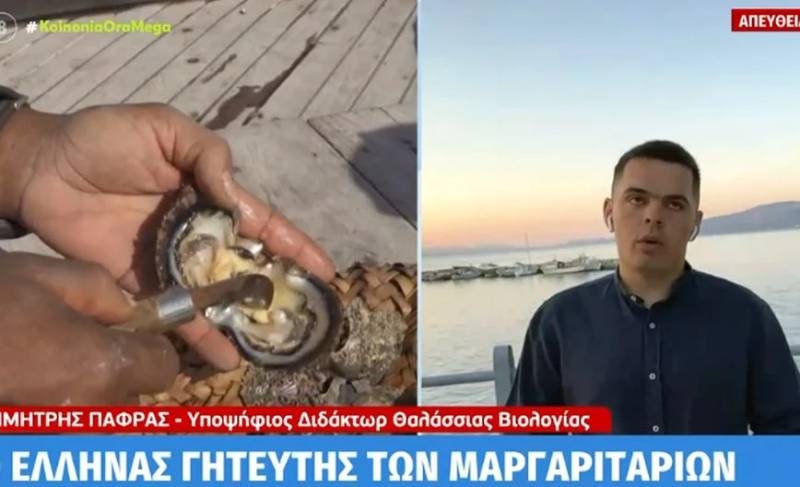Dimitris Paphras, PhD in Marine Biology, spoke about pearl fishing in a program on the MEGA channel.
The object of his study is the study of the geology, fisheries and ecology of the pearl shell. Specifically, Mr. Paphras explained: “This is a mollusc that also has a habitat in the southern part of the Gulf of Euboea. Special shells form (grow) pearls inside the valves.
Pearl is the only precious stone that is of animal origin: it is not formed in the bowels of the earth, like diamonds or emeralds, but in the shells of bivalve mollusks. Where do pearls come from inside shells? In ancient Greece, it was believed that these were the hardened tears of mermaids.. In the Middle Ages, it was believed that angels hide the tears of orphans and the innocently offended in shells, and there they turn into pearls.
In fact, the pearl is the fruit of the clam’s labors of self-defense! It is formed when a foreign object or parasite enters the shell, irritating the delicate body of the mollusk. A mollusk cannot get rid of a foreign body, and therefore it protects itself from a stranger, enveloping it with layers of a special substance. He does this in exactly the same way as when forming his shell.
The inner layer of the shell, produced by the mantle of the mollusk, is mother-of-pearl (German. perl – pearl, mutter – mother; Perlmutter – “mother of pearls”). If you find a bivalve shell on a river or seashore, examine its inside. You will see that it is covered with a layer that casts a beautiful sheen. This is the mother of pearl.
Mr. Paphras is studying the population living on the bottom of the sea, with the ultimate goal of researching and creating a new species that fishermen may be interested in (for breeding). As the scientist explained, many factors are taken into account to assess the value of a pearl, such as its size, luster and weight.







More Stories
Greece: Private laboratory doctors go on strike on Wednesday
Travel Off Path named 7 popular tourist destinations where tourists are no longer welcome. Greece… among them
Robot Sophia commented on her fall from the steps in Thessaloniki